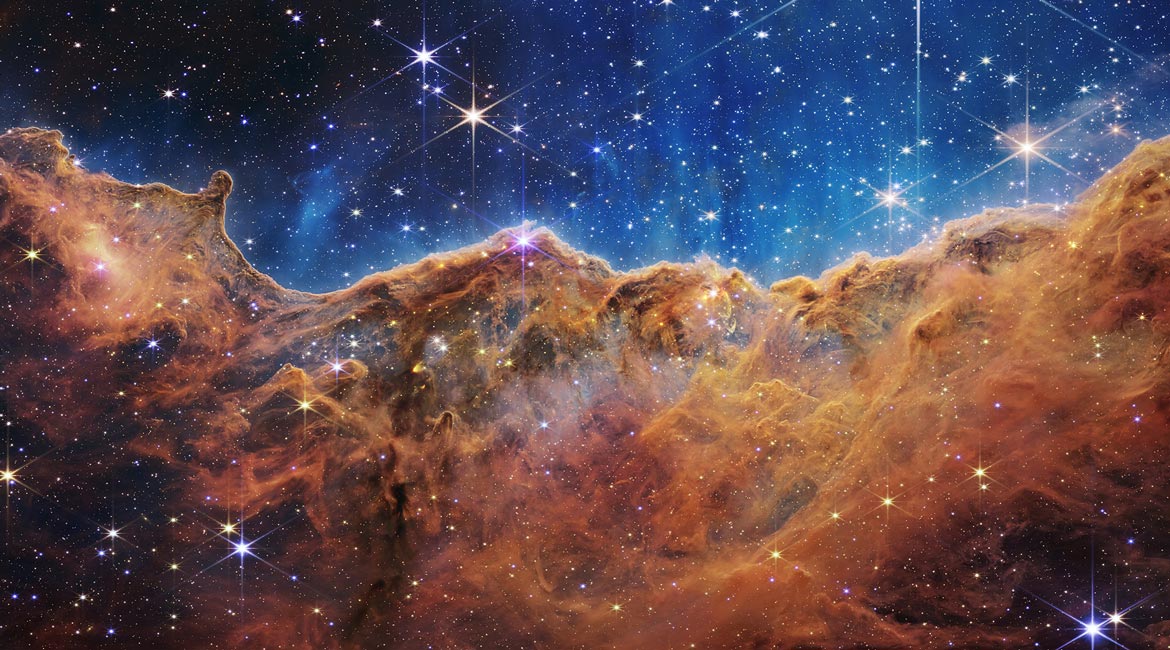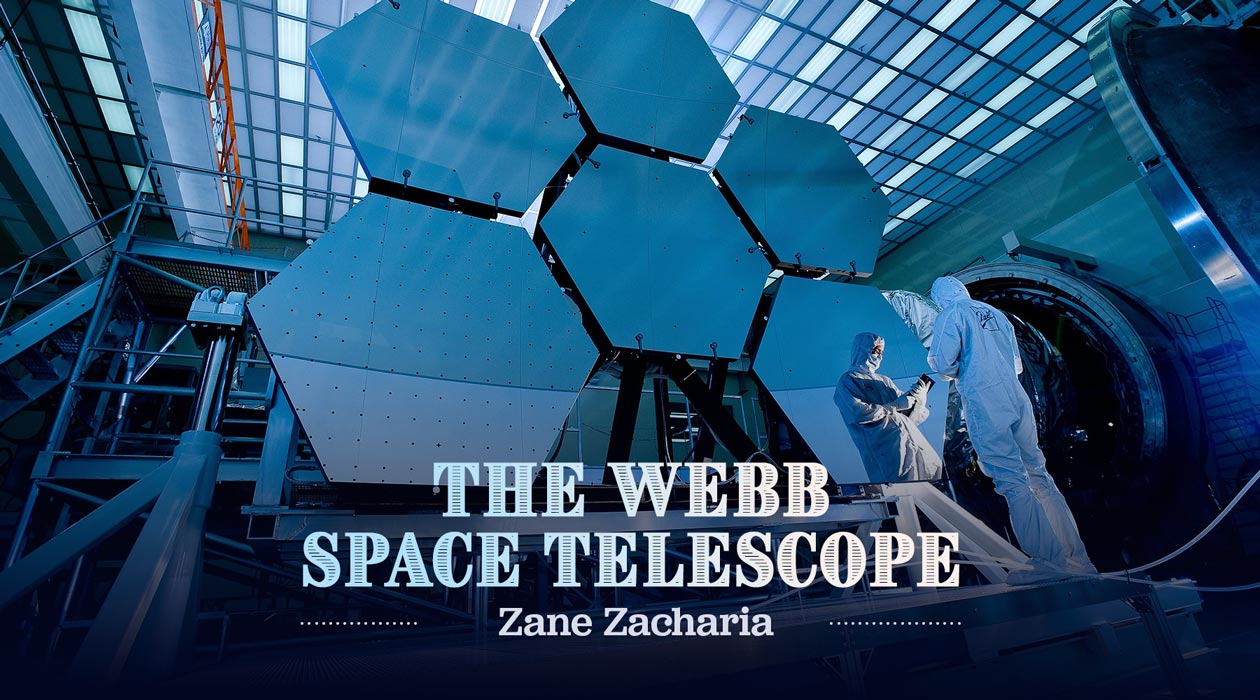You may have heard of the Webb Telescope, but what exactly is it? The James Webb Space Telescope is the largest optical telescope in space. It can view things that even the Hubble Space Telescope struggles to see. NASA worked with the ESA (European Space Agency) and the CSA (Canadian Space Agency) to develop the JWST which was launched on Christmas, 2021.
The James Webb Space Telescope has 4 main objectives:
- To search for the light of the first stars and galaxies of the big bang
- To study galaxy formation and evolution
- To understand star and planet formation
- To study planetary systems and the origins of life
The telescope has to be extremely cold to operate at 50 K (−223 °C; −370 °F). Construction was completed in 2016 at a $10 billion total cost. JSWT operates in what’s called a “halo orbit”, circling a point in space known as the Sun-Earth L2 Lagrange point about 1,500,000 km (930,000 mi) beyond Earth’s orbit around the Sun. The telescope has some of the latest technology allowing it to see 40% of the sky at any one time and 100% of it in 6 months.
The JWST got its name in 2002 when NASA administrator, Sean O’Keefe, named it after James E Webb who was the administrator of NASA from 1961 to 1968 and directed the Mercury, Gemini, and much of the Apollo programs.

Recent Discoveries:
The high precision instruments of the JWST have recently resolved star regions and other information about the Cartwheel Galaxy. The JWST has also incredibly revealed new behaviors of the black hole at the center of the Cartwheel Galaxy. The Cartwheel Galaxy is the result of a collision between a large galaxy and a smaller galaxy. Their collision formed this “ring galaxy”. The rings of this galaxy expand outward from the collision point like ripples in a pond. This new information glimpsed by the JWST provides insight on what happened to our galaxy in the past and what is going to happen in the future.
One of the greatest discoveries made by the JWST was the oldest galaxy ever discovered dating back to just 300 million years after the big bang (13.5 billion years ago). This discovery broke the record by 100 million years.
What This Means For Us::
The universe is constantly expanding so there is only so much we will ever be able to see. Because of this expanding nature of the universe, the closer to the center we go, the further into the past we are reaching. The Webb Space Telescope can help us see farther back in time than ever before. We can see how the universe was formed just 100 million years after the Big Bang which is a very small amount of time in the grand scheme of the universe. There is so much out there, and it is incredibly exciting to live in an age where this information is accessible.
Works Cited
https://time.com/6199745/james-webb-telescope-first-scientific-discovery/
https://en.wikipedia.org/wiki/James_Webb_Space_Telescope





